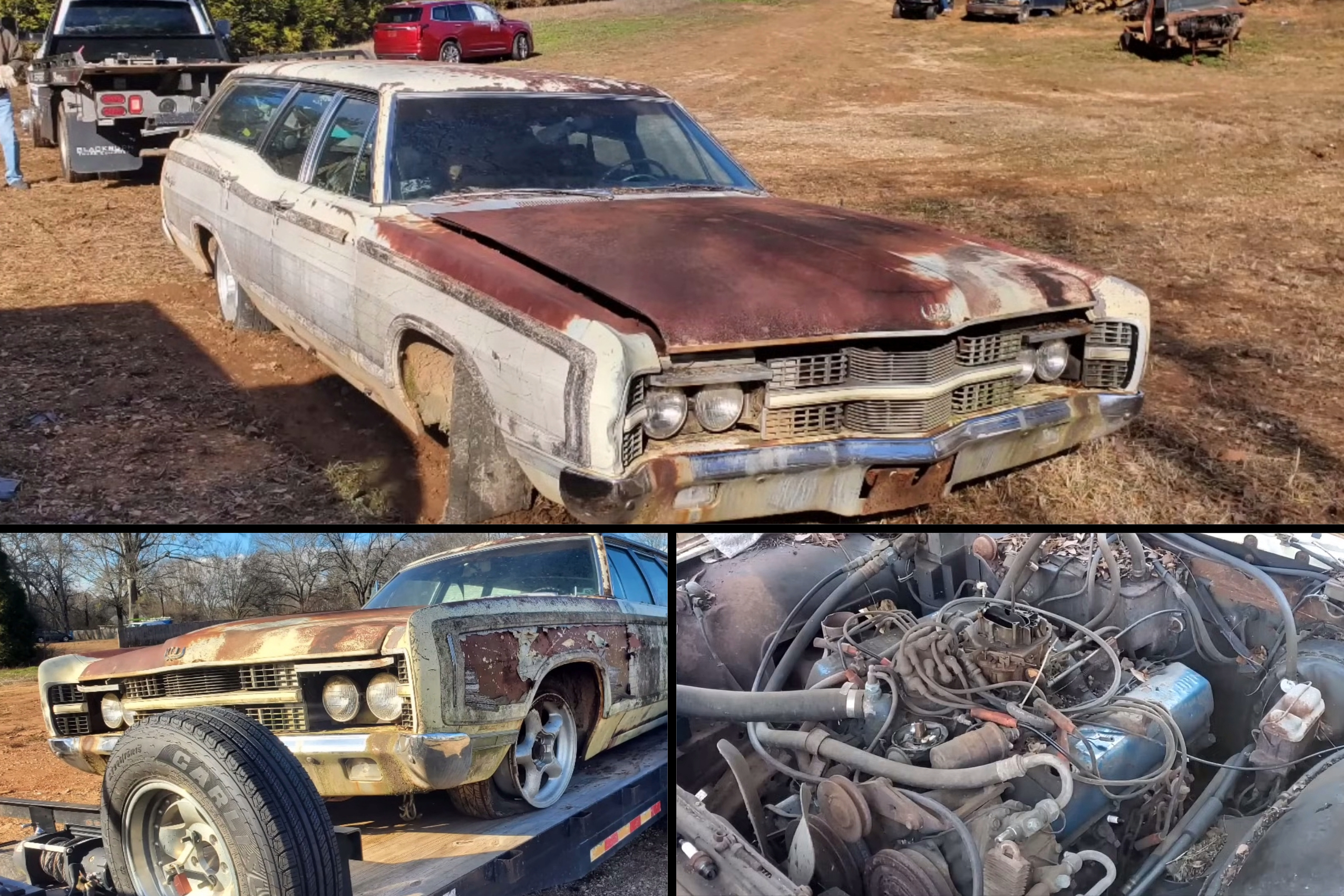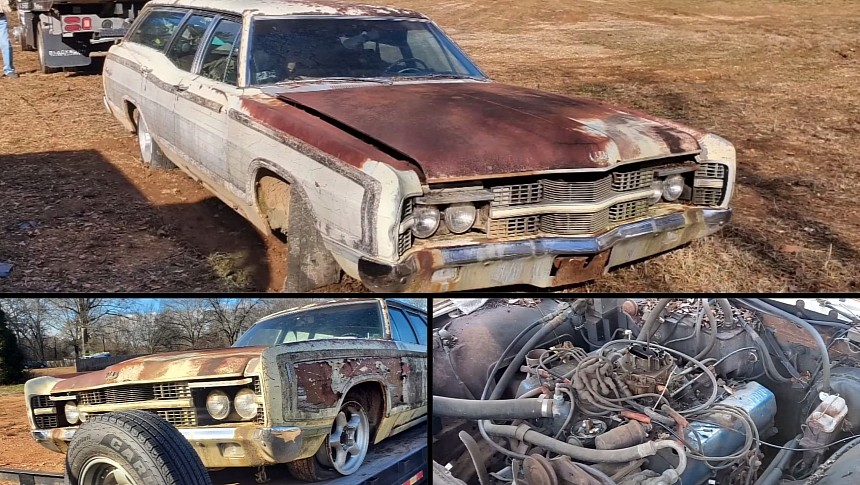
Station wagons are a thing of the past in the United States. SUVs have taken over this once-popular segment, and chances are this body style will never return. And this makes me think about the awesome grocery-getters we once had. The Ford Country Squire is one of them.
I know this is how the cookie crumbles when it comes to classics that aren’t very valuable, but it still makes me sad. And that’s precisely why I get excited whenever I see a derelict Country Squire being rescued from a scrapyard. Like this 1969 version that got a second chance at life after more than four decades.
Rescued by YouTube’s “Rusty Nuts Garage” from a future that would have likely included a crusher, this hauler was last titled in 1983. This means it spent a whopping 41 years off the road as of 2024. That’s long enough to turn any vehicle into a rust bucket, but somehow, this Country Squire managed to emerge from the junkyard still in one piece.
Granted, it has quite a bit of rust and many mechanical problems, but it’s in far better shape than most classics that have been parked outside for so long. And it’s surprisingly complete for a scrapyard vehicle. These usually get sourced for parts and lose many essential components, including the engine.
Speaking of which, this wagon still has one under the hood. And that’s not the only good news. It’s also a numbers-matching unit. But wait, there’s more. This Country Squire was ordered with a four-barrel 429-cubic-inch (7.0-liter) V8 engine. It was the range-topping mill at the time, and it’s a short-lived high-compression gem in the Country Squire.
Part of Ford’s iconic 385-series engine lineup, the 429 V8 was introduced in 1968 in the Thunderbird. The following year, it found its way into the full-size and intermediate Ford/Mercury lineup. The Country Squire got two versions of the mill. The two-barrel unit came with 320 horsepower on tap.
This grocery-getter has the top-of-the-line variant. Using a four-barrel carb and a higher compression ratio, this V8 delivered 360 horsepower and 480 pound-feet (651 Nm) of torque when new. The engine remained in production for five years, but output dropped to 208 horsepower in 1972 and 198 horses in 1973.
Ford did not keep detailed records, so it’s impossible to tell how rare this wagon is. However, enthusiasts agree it’s not quite as common as the 390-cubic-inch (6.4-liter) FE V8. But regardless of how scarce it is, the fact that the 429 in this Country Squire was complete and roared back to life is pretty amazing.
All told, assuming the new owner isn’t planning on restoring the car (which wouldn’t make much sense financially), the 429 V8 could be saved for a different, more valuable classic from the era. Like a Torino or a Mercury Cyclone. Until that happens, you can see it coming back to life in the video below.












